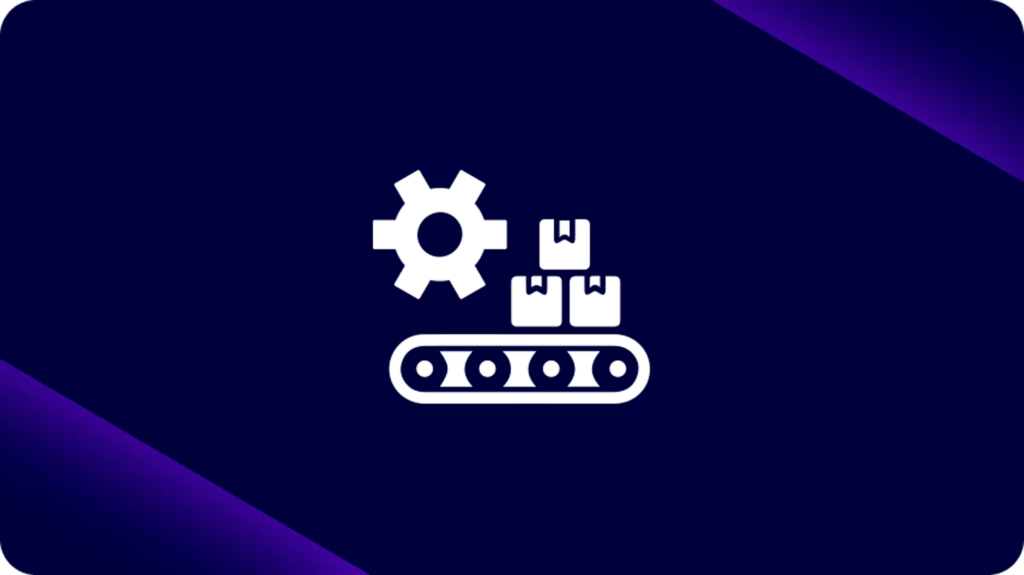June 20, 2022
Organizações de todos os tamanhos estão começando a reconhecer os desafios de trabalhar com múltiplos sistemas simultaneamente. Melhorias nas plataformas de integração de dados podem ajudar a otimizar processos, reduzir custos, simplificar a carga de trabalho dos colaboradores e impulsionar o crescimento e desempenho da empresa.
A integração de sistemas — o processo de conectar estrategicamente aplicativos e dados para possibilitar a automação de processos, análises em tempo real e orquestração em toda a empresa — fica mais complexa à medida que as empresas crescem. Ela tem como objetivo garantir que aplicativos legados, locais e em nuvem operem em conjunto para otimizar os processos de negócios.
Uma única plataforma de integração empresarial, ou iPaaS, pode fazer isso, desbloqueando os seguintes benefícios:
- Processos de negócios automatizados e otimizados
- Economia de custos e eficiências operacionais
- Utilização completa dos investimentos em tecnologia
- Flexibilidade para experimentar e inovar
- Aumento da segurança e governança
- Feedback em tempo real dos clientes
- Crescimento e desenvolvimento de produtos mais rápidos
- Workflows remotos eficientes
O mercado global de sistemas de integração está projetado para crescer 11.7% até 2025. Vamos explorar mais profundamente a importância da integração de sistemas empresariais e como adotar a melhor tecnologia.
>> Agende uma demonstração personalizada com nossa equipe de especialistas e veja como o iPaaS da Digibee trará eficiência ao seu negócio.
O que é integração de sistemas?
A integração de sistemas geralmente se refere à conexão de uma variedade de aplicativos e componentes em um único sistema que suporte as funções que impulsionam os negócios modernos.
Isso pode ser tão simples quanto conectar duas ferramentas baseadas em nuvem usando suas APIs ou tão complexo quanto gerenciar centenas de integrações entre sistemas legados, data warehouses locais e em nuvem, aplicativos personalizados e microsserviços em uma arquitetura de integração empresarial.
A integração de sistemas empresariais acontece em uma plataforma de integração (ou iPaaS) que os desenvolvedores utilizam para gerenciar centralmente múltiplas arquiteturas e configurações de integração, preferencialmente com construção low-code e infraestrutura nativa em nuvem, que escala automaticamente para atender às necessidades de capacidade.
Sem um iPaaS low-code para gerenciar as integrações empresariais, é bem comum se deparar com desafios significativos.
Principais desafios na integração de sistemas empresariais
Muitas empresas estão conseguindo apenas administrar as exigências de integração, seja com uma solução interna que exige manutenção constante, ou com uma plataforma de integração (iPaaS) antiga, que não atende aos padrões modernos de transmissão de dados em tempo real e orquestração na nuvem.
Para deixar de correr atrás do prejuízo e conseguir tempo para focar na inovação, será preciso superar esses obstáculos comuns ao gerenciar integrações em larga escala:
- Dependência exclusiva de desenvolvedores especializados em integrações: quando as integrações são complexas ou rígidas, é necessário contar com uma equipe técnica especializada. Isso aumenta significativamente os custos com contratação e terceirização.
- Ausência de uma plataforma centralizada para gerenciar integrações em toda a empresa: quanto mais isoladas as integrações, mais difícil se torna garantir uma orquestração eficaz entre os sistemas.
- Dificuldade de acessar dados essenciais de forma eficiente, seja de sistemas locais ou de softwares legados que não conseguem lidar com dados em tempo real.
- Falta de uma forma segura para conectar dados a sistemas externos,como os de fornecedores, clientes e auditores.
- Escassez de tempo para lidar com esses problemas: muitas iniciativas de transformação digital acabam ficando sobrecarregadas ou sendo deixadas de lado em favor de melhorias em produtos voltados ao cliente. Porém, as integrações são fundamentais para a excelência do produto — deixá-las em segundo plano acabará prejudicando o sucesso do seu produto a longo prazo.
8 benefícios de investir em uma estratégia de integração empresarial
Os benefícios da integração de sistemas empresariais estão se tornando essenciais para as organizações. Clientes esperam produtos rápidos e eficientes que operem em um conjunto interconectado de aplicativos e serviços. Internamente, os melhores talentos esperam acessar dados de múltiplos sistemas e usá-los para construir o melhor produto possível, aprimorar a experiência do cliente e otimizar fluxos de trabalho operacionais.
Para se manterem competitivas, as empresas precisam aproveitar totalmente esses benefícios — quanto mais afinados seus sistemas, melhores serão as margens e os indicadores de crescimento. Veja como isso pode ser feito em uma plataforma de integração moderna:
1. Utilização completa de sistemas legados
Em vez de substituir ou reformular ERPs, bancos de dados, softwares personalizados ou outras soluções legadas, as equipes de TI podem proteger seus investimentos iniciais e expandir suas capacidades com novas ferramentas baseadas em nuvem.
Ao construir uma única integração para um iPaaS que se posiciona entre serviços modernos e sistemas legados, os dados podem fluir de forma segura do antigo para o novo, sem sobrecarregar os recursos computacionais ou exigir manutenção intensiva.
Um exemplo comum dessa agilidade recém-encontrada é a modernização do processo de compras. Uma empresa usaria uma integração SAP integrada para conectar dados do ERP ao seu iPaaS, permitindo que os dados fluam livremente por ferramentas de contabilidade em nuvem, sistemas de fornecedores e soluções de BI, sem sobrecarregar o servidor original. Assim que um pedido de compra é criado no SAP, uma série de automações são acionadas para acelerar aprovações, conciliação de faturas, pagamentos e atualizações nas métricas dos painéis de contas a pagar.
Empresas que buscam principalmente modernizar sistemas legados devem explorar a integração na nuvem, ou seja, trazer aplicativos legados e bancos de dados para um ambiente híbrido ou multi-cloud.
2. Processos automatizados e otimizados
Com soluções legadas e em nuvem conectadas na mesma plataforma de integração, suas opções para automação de processos se expandem consideravelmente. Cada departamento ou equipe de go-to-market pode priorizar automações que os ajudem a servir melhor os clientes, iterar sobre produtos ou melhorar as margens.
Um caso de uso forte para automação está na jornada do cliente, onde uma rede complexa de atividades no site, comportamentos dentro do produto, comunicação por e-mail, fluxos de suporte e dezenas de outros tipos de interação pintam o quadro completo de como você está adquirindo e retendo clientes.
Com o seu site, produtos, plataforma de automação de marketing, CRM, solução de helpdesk e mais, todos conectados em uma única plataforma de integração, é possível criar automações que garantem que os clientes não sejam negligenciados.
Muitas empresas até criam canais totalmente automatizados, onde clientes menores podem testar, comprar, solucionar problemas e fazer upgrades para planos mais caros de um produto SaaS sem jamais interagir com a equipe de vendas ou com um agente de suporte ao vivo. Isso libera recursos para as vendas empresariais sem perder outras fontes potenciais de receita.
3. Redução de custos com mão de obra e TCO
Manter um conjunto de tecnologias empresariais significa adquirir e instalar muitas plataformas e componentes, gerenciar situações complexas de cobrança para centenas de fornecedores e, muitas vezes, contratar desenvolvedores especializados para construir e manter integrações entre todos eles.
E se a sua empresa não está pagando uma equipe interna de especialistas para gerenciar seus sistemas dispersos, você pode se ver recorrendo a outsourcing — o que pode aumentar rapidamente os custos, dependendo do número e da complexidade de seus sistemas.
As plataformas de integração mais econômicas de hoje resolvem esse problema com ferramentas de integração low-code e infraestrutura centralizada e gerenciada. Em vez de exigir especialistas em integração ou treinamento extenso, essas plataformas permitem que desenvolvedores gerais ou juniores construam integrações em larga escala arrastando e soltando componentes reutilizáveis em uma interface visual.
Uma solução de integração eficaz pode eliminar sua dependência de assinaturas caras, atualizações e taxas de licenciamento que vêm com múltiplos sistemas. Além disso, os desenvolvedores internos não precisam gerenciar a infraestrutura de integração, pois a plataforma de integração fornecedora cuida da escalabilidade automática, serviços conteinerizados e suporte a grandes projetos de integração empresarial.
4. Novos casos de uso inovadores para seus dados
Assim que você tiver acesso a dados estruturados e não estruturados de diferentes sistemas em tempo real, a verdadeira inovação começa. Sua plataforma de integração deve possibilitar qualquer número de arquiteturas de integração, desde o barramento de serviços empresariais (ESB) até o modelo hub-and-spoke, conectando bancos de dados on-premises, data lakes e warehouses em nuvem, e fontes de dados e aplicativos de terceiros que ajudam a entender melhor o seu negócio.
Com um único ecossistema centralizado e uma visão 360° de todos os seus dados, os líderes empresariais podem explorar e comparar métricas relevantes para seus departamentos usando ferramentas de BI que não exigem codificação ou experiência de analistas. Cientistas de dados e analistas gastam seu tempo refinando modelos de dados sofisticados, experimentando com IA e criando produtos baseados em dados para clientes e stakeholders internos.
Como todos os dados passam por uma plataforma de integração centralizada, uma única atualização pode ser disseminada em toda a empresa.
5. Melhoria da segurança de dados e governança
Quando dados sensíveis vazam para o mundo, sua empresa pode enfrentar consequências financeiras significativas— além de uma perda de confiança entre os clientes. Usar um iPaaS moderno para integração de sistemas significa operar sempre em uma plataforma segura e de nível empresarial que protege dados críticos para o negócio.
Seu iPaaS deve permitir que você acione rapidamente controles de segurança em todas as suas integrações. Por exemplo, o departamento de TI pode habilitar o single sign-on (SSO) em centenas de aplicativos empresariais em apenas alguns minutos usando conectores e componentes prontos em sua plataforma de integração.
Em indústrias com um ambiente regulatório intenso, as empresas podem usar plataformas de integração para se manterem atualizadas com os requisitos de conformidade. Uma solução de nível empresarial inclui registros detalhados, governança integrada e fluxos de trabalho escaláveis para a mudança de lógica de negócios, acompanhando as leis em constante evolução.
6. Ciclos de feedback em tempo real dos clientes
Os clientes nem sempre dizem como se sentem sobre seu produto, mas suas ações falam por si mesmas. Empresas com sistemas totalmente integrados podem acessar dados de eventos em tempo real do seu site e produto, combiná-los com dados de clientes do Salesforce e outras ferramentas de vendas e marketing, e usá-los para ajustar o suporte e melhorias de produto ao seu cliente ideal.
Isso é especialmente poderoso para estratégias orientadas a produtos ou à comunidade, que dependem de primeiros usuários, usuários avançados e da comunidade de desenvolvedores para guiar o roadmap do produto. No entanto, até as equipes de vendas mais tradicionais se beneficiam de feedback em tempo real durante testes, pilotos e onboarding para aumentar o ACV e a receita de expansão no futuro.
7. Crescimento e time to market acelerados
om processos demorados automatizados, entrada manual de dados eliminada e análises em tempo real acessíveis de qualquer lugar, sua organização pode alcançar marcos importantes mais rápido.
Equipes de produtos conseguem lançar aplicativos poderosos voltados para o cliente que dependem de dados precisos de diversas fontes. As equipes de vendas e marketing podem usar automação para segmentar seus clientes mais valiosos e fechar negócios com maior ACV.
Ter uma estratégia de integração escalável libera recursos de TI para otimizar processos de negócios e acelerar fluxos de trabalho comuns, em vez de gastar tempo gerenciando infraestrutura de integração. Quanto mais sofisticadas as capacidades de automação da sua empresa, mais rápido você pode eliminar gargalos e levar novos sistemas emocionantes ao mercado.
8. Trabalho remoto para o futuro
A pandemia expôs as fraquezas da integração empresarial como nunca antes. Quando a força de trabalho foi para o modelo remoto de forma abrupta, muitas grandes empresas enfrentaram dificuldades para contornar firewalls corporativos e barreiras de TI.
Em uma plataforma de integração empresarial, sua empresa tem uma fonte central de verdade que tanto funcionários quanto sistemas automatizados podem acessar de forma segura, de qualquer lugar. Sistemas on-premises permanecem protegidos, stakeholders de negócios e parceiros tomam decisões com dados em tempo real na nuvem e os clientes têm uma experiência contínua, completamente independente de localização.
Integração de sistemas com o iPaaS da Digibee
Digibee é a única plataforma de integração capaz de escalar workflows de integração enquanto reduz custos, dívida técnica e a sobrecarga das equipes de desenvolvimento. Grandes empresas utilizam a solução para gerenciar múltiplos modelos de integração, permitindo criar, testar, implementar e monitorar todas as integrações rapidamente em uma plataforma flexível e centralizada.
Com a Digibee, não é necessário começar do zero para aproveitar os principais benefícios da integração de sistemas. Desenvolvedores podem usar as Cápsulas, componentes modulares, para criar e gerenciar integrações de forma ágil, sem precisar de treinamento especializado. A flexibilidade da plataforma acelera até os projetos de integração mais desafiadores: você pode modernizar sistemas legados, adotar novas ferramentas sem abandonar as antigas e migrar de soluções ultrapassadas no seu próprio ritmo, sem interromper as operações.
Para saber mais, faça nosso tour pelo produto ou solicite uma demonstração personalizada à nossa equipe de vendas.








